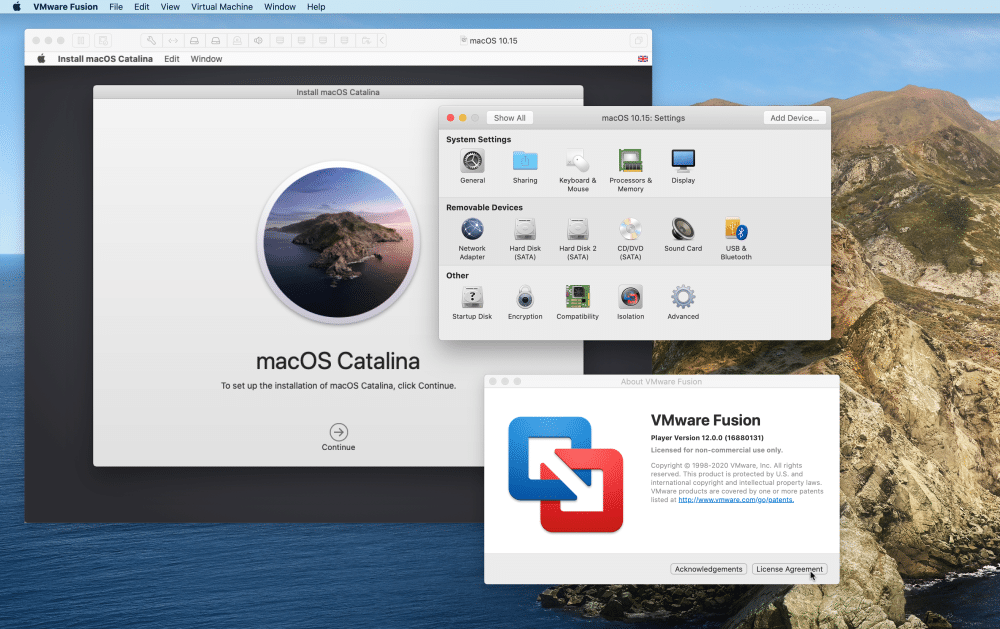

There I changed the adapter settings to Autodetect, instead of Share with my Mac. So from what I read on different forums, a lot of users had this issue after the upgraded to Big Sur and were forced to upgrade towards VMware Fusion 12 as well.Īfter some fiddeling around, I noticed that the VPN connection was able to connect when I changed the settings within the network adapter of my windows vm (in the Virtual Machine Library of VMware). Of course I was not really happy with this. Some of my VPN Connections towards customers, couldn’t connect anymore. I installed it and first everything seemed ok, until the first problem showed up. So I was forced to upgrade the program toward Fusion 12. However, when I opened that program when I upgraded towards Big Sur, the program simply just didn’t respond. This is often an Windows VM that I run on my Macbook with. So for my customer I use different VMs to make VPN connections towards their systems. Anyway, after the update, quite some stuff seems to be intact except when it came towards my VMware Fusion Program. Especially since I’m also using a lot of audio Software because I also have several DAWs for Producing & DJ’ing. This is especially true for OS X updates, cause they almost never go without issues.

The reason is simple, every upgrade comes often with new challenges and can interrupt my work flow. However, coming to my own personal life, and I’m actually not that fond of upgrading my software. For my work, I often do upgrades and updates for customers within Windows & VMware. I came from Catalina and was postponing this upgrade for some time. Tip: If you right click\double finger tap either the vmwarevm file or the VMware Fusion App file you can use the Show Package Contents to display the file(s) contained within.So almost after a year, I finally updated my macbook pro to Big Sur. ~/Destination/Path – This is the destination location for your OVF file I.e. ~/Documents/OVF ~/Users/graeme/Virtual Machines.localized/VM1.vmwarevm/VM1.vmx ~/Path/To/VM/VM Name.vmwarevm/VM Name.vmx – This is the location of your VM’s VMX file i.e. You can find out more about finding the path at the end of this post. if the name was “Graeme VM” you would display it as “Graeme\ VM”. Note: If your path has a space then it will need to have \ and space after it.


~/Path/To/VM/VM Name.vmwarevm/VM Name.vmx ~/Destination/Path Type in the following command (as one line): /Applications/VMware\ Fusion.app/Contents/Library/VMware\ OVF\ Tool/ovftool -acceptAllEulas In order to export a VM from Fusion you need to do it via some commands in Terminal.Ģ. Unfortunately there is no obvious way to do this in VMware Fusion 12. If you wanted to export a virtual machine from VMware Fusion 12 to move the virtual machine to another machine\host, you’d think that you could just right click the VM and select export or use one of the menus to export it right?


 0 kommentar(er)
0 kommentar(er)
